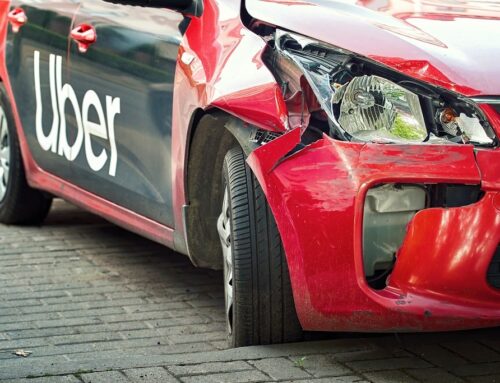Car accidents are unfortunately a common occurrence on roads worldwide. Understanding the common causes of these accidents can help raise awareness and promote safer driving practices. In this article, we will explore the various factors that contribute to car accidents and provide insights into how they can be prevented.
Introduction
Car accidents can have devastating consequences, leading to injuries, property damage, and even loss of life. Identifying the root causes behind these accidents is crucial for reducing their frequency and severity. By addressing these causes, we can make significant strides toward creating safer roadways for everyone.
Definition of Car Accidents
A car accident refers to any collision involving one or more vehicles that results in damage to property or injury to individuals. These accidents can range from minor fender benders to catastrophic crashes, and their causes can vary significantly.
Distracted Driving
One of the leading causes of car accidents is distracted driving. With the rise of smartphones and other electronic devices, drivers are more prone to divert their attention from the road. Common distractions include texting, talking on the phone, eating, or even interacting with passengers. These distractions can significantly impair a driver’s ability to react promptly to changes in traffic conditions.
Types of Distractions
Distracted driving can be categorized into several types:
1. Visual Distractions: These distractions take the driver’s eyes off the road. Examples include looking at a GPS device, reading a text message, or checking one’s appearance in the rearview mirror.
2. Manual Distractions: Manual distractions involve taking the hands off the steering wheel. This could include reaching for an object, adjusting the radio, or eating while driving.
3. Cognitive Distractions: Cognitive distractions occur when the driver’s mind wanders away from the task of driving. Daydreaming, deep conversations, or being lost in thought can all lead to cognitive distractions.
Addressing distracted driving requires a combination of awareness, education, and legislation. Campaigns promoting hands-free communication, stricter penalties for texting while driving, and encouraging responsible passenger behavior can all contribute to reducing the prevalence of this dangerous habit.
Speeding
Speeding is another major contributor to car accidents. Exceeding the speed limit not only reduces the driver’s ability to control the vehicle but also increases the stopping distance. This combination significantly elevates the risk of accidents and makes the consequences more severe.
Consequences of Speeding
Speeding can lead to the following consequences:
1. Reduced Reaction Time: Higher speeds require quicker decision-making and reaction times. When a driver is traveling at an excessive speed, they have less time to respond to unexpected situations, such as sudden stops or obstacles on the road. This can result in a collision that could have been avoided if the driver was traveling at a safer speed.
2. Increased Stopping Distance: The distance required to bring a vehicle to a complete stop increases as the speed increases. When a driver is speeding, they may not be able to stop in time to avoid colliding with the vehicle ahead, leading to rear-end accidents.
3. Magnified Impact: The force of impact in a car accident is directly related to the speed of the vehicles involved. Higher speeds can lead to more severe injuries and greater damage to the vehicles involved.
To address the issue of speeding, law enforcement agencies enforce speed limits and implement traffic calming measures in areas prone to accidents. Additionally, public awareness campaigns highlighting the dangers of speeding can help instill a sense of responsibility among drivers.
Drunk Driving
Drunk driving remains a significant cause of car accidents. Operating a vehicle under the influence of alcohol or drugs impairs judgment, coordination, and reaction time. This dangerous behavior puts not only the impaired driver at risk but also endangers the lives of other innocent road users.
Impaired Judgment and Reactions
Alcohol and drugs can impair a driver’s judgment and decision-making abilities. Intoxicated drivers may take unnecessary risks, such as running red lights or making unsafe lane changes. Additionally, impaired drivers may have delayed reactions to traffic signals or sudden maneuvers by other vehicles, increasing the likelihood of accidents.
To combat drunk driving, stringent laws and penalties are in place to discourage individuals from driving under the influence. Public education campaigns, ride-sharing services, and designated driver programs also play a crucial role in promoting responsible alcohol consumption and preventing intoxicated individuals from getting behind the wheel.
Reckless Driving
Reckless driving encompasses a range of dangerous behaviors on the road. It refers to driving with a disregard for the safety of oneself and others. Some common reckless driving behaviors include excessive speeding, aggressive lane changes, tailgating, and disregarding traffic signals.
Common Reckless Behaviors
- Tailgating: Following another vehicle too closely, leaving insufficient space to react to sudden stops.
- Aggressive Lane Changes: Abruptly changing lanes without signaling or cutting off other drivers, increasing the risk of side-swipe accidents.
- Running Red Lights: Ignoring traffic signals and proceeding through red lights, risking collisions with cross-traffic.
Addressing reckless driving requires a combination of law enforcement, public education, and driver awareness programs. Strict penalties, such as fines and license suspensions, can deter individuals from engaging in reckless behaviors.
Weather Conditions
Weather conditions can have a significant impact on road safety and increase the likelihood of car accidents. Adverse weather such as rain, snow, fog, or ice creates challenging driving conditions that require extra caution and adjustments in driving behavior.
Impact on Road Safety
- Reduced Visibility: Fog, heavy rain, or snowstorms can significantly impair a driver’s visibility, making it difficult to see other vehicles, road signs, or pedestrians.
- Slippery Road Surfaces: Wet or icy roads reduce tire traction, making it harder for drivers to control their vehicles. This increases the risk of skidding, sliding off the road, or losing control during turns or braking.
- Limited Stopping Distance: Poor weather conditions require increased stopping distances due to reduced tire grip. Failing to adjust driving speed accordingly can lead to rear-end collisions or inability to stop in time.
When faced with adverse weather conditions, drivers should exercise caution and adapt their driving behavior to ensure their safety and the safety of others on the road.
1. Reduce Speed: Slowing down during inclement weather allows drivers to maintain better control of their vehicles and react to sudden changes in road conditions.
2. Increase Following Distance: Allowing for a greater distance between vehicles provides more time to stop or maneuver in case of emergencies or sudden braking.
3. Use Lights: Turning on headlights or fog lights improves visibility for both the driver and other vehicles, reducing the risk of collisions.
4. Stay Updated: Monitoring weather forecasts and road condition reports can help drivers plan their journeys accordingly and avoid traveling during severe weather events if possible.
5. Pull Over if Necessary: In extreme weather conditions, such as heavy snowstorms or torrential rain, it may be safer to find a safe place to pull over and wait until the weather improves.
Fatigue
Fatigue is a widespread issue among drivers and is a significant contributor to car accidents. When drivers are tired or drowsy, their ability to concentrate, react quickly, and make sound judgments is compromised.
Dangers of Driving while Tired:
- Decreased Alertness: Fatigue impairs a driver’s alertness, making it more difficult to stay focused on the road and react to potential hazards.
- Microsleep: Extreme fatigue can lead to brief episodes of microsleep, where the driver unintentionally falls asleep for a few seconds. During this time, the vehicle may drift out of the lane or fail to respond to changes in traffic.
- Slowed Reaction Time: Fatigue slows down cognitive processes, including reaction time. This delay can be critical in avoiding accidents or minimizing their severity.
To combat fatigue-related accidents, drivers should prioritize getting an adequate amount of sleep before long journeys. Taking regular breaks during extended trips, consuming caffeine in moderation, and avoiding driving during times when they would normally be sleeping can also help prevent accidents caused by fatigue.
Inexperienced Drivers
Inexperience behind the wheel is another common cause of car accidents. Newly licensed drivers or individuals with limited driving experience may lack the skills and situational awareness necessary to navigate complex traffic scenarios.
Lack of Skill and Awareness
- Limited Knowledge of Traffic Laws: Inexperienced drivers may not be fully familiar with traffic laws and regulations, leading to errors or misinterpretations.
- Poor Hazard Perception: Recognizing potential hazards and reacting appropriately requires practice and experience. Inexperienced drivers may fail to identify risks or make the wrong decisions when faced with challenging situations.
- Overconfidence: Some inexperienced drivers may overestimate their abilities, leading to risky maneuvers or excessive speeding.
To address the issue of inexperienced drivers, comprehensive driver education programs, including both classroom instruction and practical training, should be implemented. Graduated driver licensing systems, which gradually introduce new drivers to more complex driving conditions, can also help reduce the risks associated with inexperience.
Mechanical Failures
Mechanical failures in vehicles can contribute to accidents, emphasizing the importance of regular vehicle maintenance and inspections.
Importance of Vehicle Maintenance
- Brake Failures: Malfunctioning brakes can lead to extended stopping distances or total brake failure, increasing the risk of collisions.
- Tire Blowouts: Worn-out or underinflated tires are more prone to blowouts, causing sudden loss of control and accidents.
- Faulty Lights or Signals: Non-functional headlights, taillights, or turn signals can make it difficult for other drivers to see and anticipate the intentions of the affected vehicle.
- Steering or Suspension Issues: Problems with steering or suspension systems can compromise a driver’s ability to control the vehicle, especially during sudden maneuvers such as avoiding obstacles or making sharp turns.Regular vehicle maintenance, including inspections, oil changes, tire rotations, and brake checks, can help identify and address potential mechanical failures before they lead to accidents. Adhering to manufacturer-recommended maintenance schedules and promptly addressing any issues can significantly reduce the risk of accidents caused by mechanical failures.
Road Conditions
The condition of roads and infrastructure can also contribute to car accidents. Poorly maintained roads, inadequate signage, or construction zones can create hazardous driving conditions.
Poorly Maintained Roads and Infrastructure
- Potholes: Unfilled potholes can cause tires to blow out or result in a loss of control, particularly at high speeds.
- Uneven Surfaces: Roads with uneven surfaces or significant bumps can cause drivers to lose control or experience uncomfortable and potentially dangerous vibrations.
- Lack of Signage: Inadequate or confusing signage can lead to driver confusion, improper lane changes, or failure to yield, increasing the risk of collisions.
- Construction Zones: Construction sites often have reduced lane widths, temporary lane shifts, and uneven surfaces, creating challenging driving conditions.
Addressing road conditions requires collaboration between government agencies responsible for road maintenance and construction, ensuring timely repairs and proper signage. Public reporting systems can also help identify and address hazardous road conditions promptly.
Conclusion
Car accidents are frequently caused by a combination of factors, including distracted driving, speeding, drunk driving, reckless behaviors, adverse weather, driver fatigue, inexperience, mechanical failures, and road conditions. By understanding these causes, we can take steps to prevent accidents and promote safer driving practices.
Adopting responsible driving habits, such as avoiding distractions, obeying speed limits, abstaining from driving under the influence, and regularly maintaining our vehicles, can significantly reduce the risk of accidents. Additionally, improving driver education programs, enhancing road infrastructure, and enforcing traffic laws contribute to creating a safer driving environment for everyone.
By prioritizing road safety and being mindful of our own behaviors and surroundings, we can work towards reducing the occurrence of car accidents and protecting ourselves and others on the road.
FAQs (Frequently Asked Questions)
1. How can I avoid distracted driving? To avoid distracted driving, make sure to keep your focus on the road at all times. Put your phone on silent mode, avoid eating or drinking while driving, and minimize interactions with passengers that could divert your attention.
2. Is it necessary to always follow the speed limit? Yes, it is crucial to follow the speed limits set for each road. Speed limits are determined based on safety considerations, and exceeding them significantly increases the risk of accidents.
3. What are some signs of driver fatigue? Signs of driver fatigue include frequent yawning, difficulty keeping your eyes open, drifting out of your lane, missing road signs, and having trouble maintaining a consistent speed.
4. Are new drivers more prone to accidents? Yes, new drivers are more prone to accidents due to their limited experience and familiarity with complex driving situations. Graduated licensing programs and comprehensive driver education can help address this issue.
5. How can I report hazardous road conditions? You can report hazardous road conditions to the relevant local authorities, such as the transportation department or highway patrol, who can take the necessary steps to address the issue.



